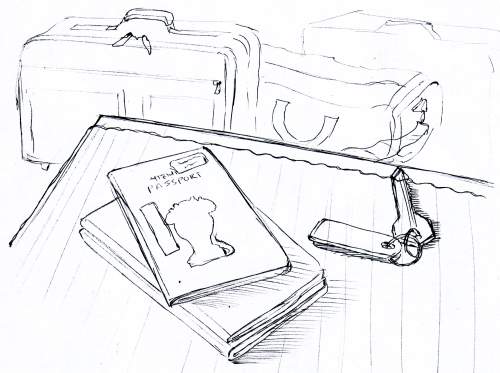
My Grandmother has a common comment to make when it comes to going out of town or travelling. She says it’s a gargantuan task to leave your home empty. While ever active, she’s always been a bit of a home-bird. She doesn’t like travelling to the point where she can’t come back home at the end of the day. In many ways, she’s right, of course. Leaving your home, for anything more than a few hours, always requires a good amount of planning and preparation.
I experienced this first hand last month. It was time for a break from the summer heat of Dubai, my adopted home, to spend some time in Mumbai, my original home. But before that could happen, much needed to be done. There were all the traditional home-maintenance and cleaning chores to be completed, and there were also newer concerns. We fail to realise how much of our work and lives are now digital and reside as ephemeral bits and bytes on a computer. Being human, we take things for granted, such as the fact that everything on the discs of a computer are there forever and ever. Not true. In fact, there is possibly nothing in the old-world realm of notebooks, parchment, and stone tablets that can compete with the random impermanence of digital media.
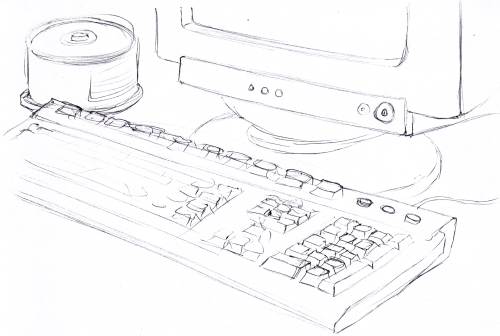
Any impending break from normal life is always a great spur to take stock of what needs doing. The prospect of being separated from my ubiquitous digital data was sufficient impetus to remind me that I hadn’t backed-up my digital photos off my hard-drive for several months, and my work files hadn’t had the benefit of a back-up in a few years! I quickly set out to correct that situation and multiple copies of carefully divided sub-folders on many writeable DVDs resulted. And a copy on another back-up hard-disc, of course. If there’s one thing I’ve learnt, it’s to never trust data to hard-discs or optical discs (CDs, DVDs) alone. Either can lose data at the drop of a hat without recourse or warning.
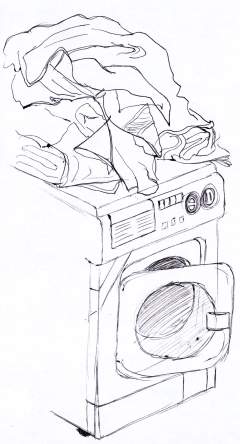 Many other things were accomplished, and many others remained un-finished. An ever growing stash of plastics, cans, and bottles were consigned to the local recycle centre, and a faulty exhaust fan was replaced. On the other hand, the house wasn’t left in pristine condition, a moody washing machine was not brought back on the straight and narrow, in spite of my efforts with a screwdriver, a handful of online projects I had hoped to start off before the trip remained strictly in the planning stage, and plans of world domination remained on the back burner.
Many other things were accomplished, and many others remained un-finished. An ever growing stash of plastics, cans, and bottles were consigned to the local recycle centre, and a faulty exhaust fan was replaced. On the other hand, the house wasn’t left in pristine condition, a moody washing machine was not brought back on the straight and narrow, in spite of my efforts with a screwdriver, a handful of online projects I had hoped to start off before the trip remained strictly in the planning stage, and plans of world domination remained on the back burner.
I did manage to complete our meagre packing, even if it was in progress until a few minutes before we left, and in a quick afterthought, I left every room and bathroom with a small cup of standing vinegar to deodorise the air while we were away. Small gestures in the larger scheme of things, but I’m glad they came to mind. Finally, with a taxi waiting and with every possible appliance switched off and double-checked, we shut the door to our home, turned the key, and set off for home.
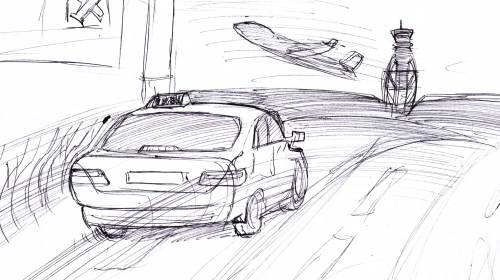
The ride to the airport was uneventful, not counting the extreme driving that is to be expected from taxi drivers everywhere, and Dubai taxi-drivers in particular. The departure entrances were mildly crowded. We stood behind the snaking queue of luggage trolleys and people homing in towards the first set of x-ray machines and inched along. While we waited, watches, belts, phones, keys and spare change were all deposited into the nearest convenient pocket on hand-baggage. This was to avoid doing that clumsy moonwalk back through the metal detector, to discard yet another metal item at the behest of the security, as was happening to so many before us and would happen to so many after. For some reason, people never seem to learn this lesson.
The check-in was trouble free, in no small part because we were carrying very little luggage. Little luggage makes the job of the person at check-in easier — no need to put on their official bad-cop mask and tell you you’re going to have to pay extra weight charges for that dinosaur skeleton you insist on air-freighting on your holidays, no need to deal with your grovelling for the happiness of your dinosaur-loving kids back home and such — so they usually speed you through.
 Having relieved ourselves of some burden at check-in, we headed towards the immigration area. Like all large international airports in major cities, Dubai International is a bit, well, large. So this stroll to the immigration from some of the check-in areas is a trip of some length. Random airport paraphernalia littered the way. People waited, looking excited and bored, irate travellers argued with irate staff, tiny airport convenience stores popped out of nowhere at the side of a corridor and people browsed through a sparse stack of tired best sellers, right next to bad chocolate and gaudy post-cards. Then I came upon a line of people waiting with particularly large pieces of luggage. They all appeared to be held up at one of those machines that wrap your luggage in a plastic sheet for a fee. They can be quite popular amongst Indians travelling back home during the monsoons. A wrapping of plastic seems like an almost insultingly inadequate protection against the marvel of meteorology that is the monsoons, but something is better than nothing. As I walked by the machine, I looked at the luggage currently being mummified in polythene and a large round eye stared back at me. A person-sized fluffy toy of a shocking-pink — and I kid you not — FISH was being balanced precariously on the machine’s turn-table, half wrapped in plastic. Still processing the reality of that sight, I walked further and on the opposite side of the lounge I noticed a luggage trolley with a large fluffy toy of a white and pink segmented worm (one of those cute kiddy characters), propped in its top basket. If I was a superstitious person, I would have considered that some sort of modern-day omen, but since I had never heard of a tarot card called the 2 of pink fluffy toys, I ignored it. I saw no more pink fluffy toys on the trip, other than those on sale at the duty free.
Having relieved ourselves of some burden at check-in, we headed towards the immigration area. Like all large international airports in major cities, Dubai International is a bit, well, large. So this stroll to the immigration from some of the check-in areas is a trip of some length. Random airport paraphernalia littered the way. People waited, looking excited and bored, irate travellers argued with irate staff, tiny airport convenience stores popped out of nowhere at the side of a corridor and people browsed through a sparse stack of tired best sellers, right next to bad chocolate and gaudy post-cards. Then I came upon a line of people waiting with particularly large pieces of luggage. They all appeared to be held up at one of those machines that wrap your luggage in a plastic sheet for a fee. They can be quite popular amongst Indians travelling back home during the monsoons. A wrapping of plastic seems like an almost insultingly inadequate protection against the marvel of meteorology that is the monsoons, but something is better than nothing. As I walked by the machine, I looked at the luggage currently being mummified in polythene and a large round eye stared back at me. A person-sized fluffy toy of a shocking-pink — and I kid you not — FISH was being balanced precariously on the machine’s turn-table, half wrapped in plastic. Still processing the reality of that sight, I walked further and on the opposite side of the lounge I noticed a luggage trolley with a large fluffy toy of a white and pink segmented worm (one of those cute kiddy characters), propped in its top basket. If I was a superstitious person, I would have considered that some sort of modern-day omen, but since I had never heard of a tarot card called the 2 of pink fluffy toys, I ignored it. I saw no more pink fluffy toys on the trip, other than those on sale at the duty free.
We passed quickly through immigration and another security check. Going down an escalator, a far-eastern couple were taking photos of each other. On a small landing before another set of escalators that take you even deeper underground, the woman posed against the grey walls and the grey floor in a featureless corner as the man snapped a few quick shots. Like in all airports, photography is strictly prohibited here, and like in all airports, people will flout that rule to take the most uninteresting shots in the most uninteresting spots. A strange phenomenon.
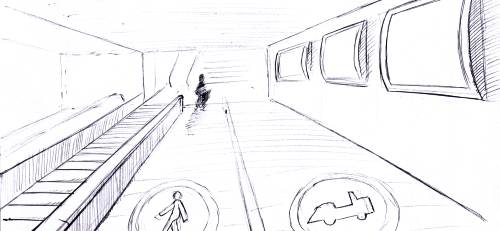
This descent into the underworld in the Dubai airport leads to a very long corridor with moving-walkways towards the centre, and backlit ads on the outer walls. This corridor runs under the taxing area above, joining the check-in building with the duty free and departure gates. Dubai regulars often refer to this as the The Dubai marathon, vaguely referring to the fact that at some point in the past, all these parts of the airport existed under one roof and travel in an out involved much less journeying on foot. The Dubai marathon was surprisingly unadorned on this occasion. The Dubai boom-town mood has held sway for a long time, with commercial interests spending vast amounts of advertising money in high profile places like the airport. On this trip I found most of the back-lit ads staring blankly and unlit at me and most of the few occupied spaces contained obviously out-dated posters, or posters for the agency that manages the very same ads. A drastic change from times past. Ultimately, there was light at the end of the tunnel. It came from the sky-light high up in the ceiling of the duty free building, shining down into the grey chamber where the escalators rose once again upward to ground level.
For me the old Dubai duty free was an exciting place. It had a well stocked bookshop that held treasures you would not find outside its confines, and a good bookshop is always appreciated. The new duty free is popular, famous, much talked about, but ultimately boring, because it’s basically a Dubai mall that also sells alcohol and has jet planes parked at the sides. The part about the jet planes is still exciting but the contents of the building itself are not. Not for me anyway.
The McDonalds in the Dubai Duty Free food court charges 50% more for everything than they do outside. I know this because we invariably end up eating something there on our trips through the airport. Not that I’m a great proponent of the health and flavour benefits of the company’s fast food , but they are the quickest and most convenient option among those available. We didn’t have a lot of time to spare, so after our quick meal we headed straight for the departure gate which was another reasonable walk away. The crowd at the entrance to the lounge was sparse. After quickly presenting our boarding passes, we were ushered in.
The plane had already begun boarding. Still, there was a fairly long queue waiting to board, so we took a seat to wait till it ebbed a bit. There were other stragglers, some sat around and relaxed like us while some stood near the glass walls staring out on to the tarmac. In one corner, one of the passengers was taking the mandatory random shots with his phone cam: walls, the planes outside, the ceiling, the chandeliers in the next chamber etc. In a span of the next few minutes, as we waited, a virtual horde of camera wielders gravitated towards the railing and began snapping with gay abandon. One even whipped out a video camera, and proceeded to execute the common camera panning move in some of the least interesting spots to survey the surroundings. People don’t quite seem to grasp the concept of something not being allowed or off-limits. I was given further proof of this in a few minutes when we joined the queue and neared the doors of the plane. A woman was stopped before boarding the plane for carrying a Costa’s coffee cup. The security people were telling her to leave it there or finish it, and she was actually saying that she couldn’t enjoy it if she finished it quickly. The human sense of entitlement is astonishing.
The flight was smooth enough. Air India hasn’t been cool for a while, but even they were showing signs of the prevailing times. On the one hand I saw the return of real metal cutlery after years — the first time since 2001. On the other hand, they didn’t serve everyone a fruit drink or even water before take-off as was common before, and the drinks selection was limited to cola, tomato juice and the usual avatars of alcohol which I am never interested in. Since the same number of people still need to be fed, I doubt such reductions in choice lead to any significant savings, but such is the nature of what I can only assume are desperate cost-cutting measures.
We spent the requisite 10-20 minutes circling Mumbai airspace, an expected delay when landing at the busy night shift at Mumbai International Airport. After a few bumpy minutes in the clouds (have I mentioned that the nose camera feed on the new Boeing 777s is both a wondrous and scary thing?) we approached for landing. Cross winds were strong and the aircraft seemed to swing through the air as we descended. It was a bumpy landing, but my compliments to the pilot for decelerating from chaos to a controlled crawl in a few short moments.
Our arrival was announced over the speakers and we were helpfully informed of the local time and external temperature. Then we were all told to remain seated until we taxied to the terminal building and the fasten-seatbelt signs were switched off. Ten seconds later, while still a couple of kilometres from our final parking spot, everyone around us burst on to their feet with a clackety-clack of hastily opened seatbelts and the noisy effort of heavy hand baggage being wrestled down from the overhead lockers. The flight attendants and a few remained seated as the plane barrelled down the side-lanes of the tarmac at a decent clip. The rest of the overenthusiastic fools, who are never in short supply, stood around hefting their baggage and standing triumphantly for the next fifteen minutes until the aircraft was safely attached to the terminal building through the concourse and we were finally able to de-plane.
Stepping off the concourse into the airport building was a bit of a shock. The Mumbai airport has been undergoing a makeover for a while now. A few years ago the major airports in India were privatised in a bid to modernise and update them to current standards and luxuries. The corridor we stepped into was moodily lit, and the walls were lined with wood panelling, granite tiles and brushed-metal embellishments. A far cry from the stark white concrete corridors of old. As we walked along, jostled by the many people in a hurry to get nowhere in particular, I noticed other changes. All the glass separating the corridor from the departure lounges were sparkling and the walls were punctuated with paintings and other artwork at regular intervals. The corridor finally took a turn to the right and in that recess was a large canvas by Anjolie Ela Menon, a well known contemporary Indian artist. The corridor took a left and suddenly I was once again in the old Mumbai airport, white walls, grey floor tiles, simple florescent lighting and all. It was like stepping through the looking glass and reminded me that the change was still in progress.

Immigration was painless as always, other than the make-shift detour to allow for some paperwork to be done to supposedly help check the growing swine-flu problem, and the fact that most of the staff and officers were wearing breathing masks. A necessary precaution for people being exposed to so many different travellers on a daily basis. More jostling ensued to capture prime position on the conveyor belt at luggage collection. We had little checked baggage so we stood back and swooped in when we spotted something.
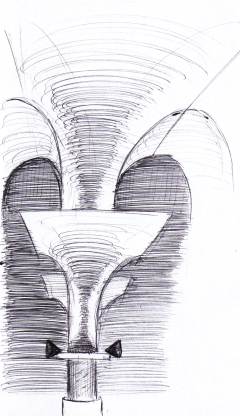 Considering how little we were carrying for three people, the customs people had no problems letting us through. After a little more displaying of papers, we were out in the open. ‘The open’ was another big change. I had seen them working on this particular out-door arrivals area the last time I was in the city but to see it almost complete was still impressive. A canopy of white material in the form of stacks of concentric funnel shapes blocked the sky. The canopy was lit with white and blue lights. All a little too flashy for my tastes, but impressive, none the less. What really impressed me was what they had done with the ground level. The exit lead into a large empty square area that was fenced off to keep the waiting hordes at bay. Beyond that there were little planting areas, where new trees have been planted, surrounded by a polished-stone skirting for people to sit on. Once the trees grow, it will form one of the most natural seating arrangements you’re likely to see in an airport waiting area — more public park and less airport. A brilliant touch, and a more practical design solution to the very real vastness of crowds in Mumbai.
Considering how little we were carrying for three people, the customs people had no problems letting us through. After a little more displaying of papers, we were out in the open. ‘The open’ was another big change. I had seen them working on this particular out-door arrivals area the last time I was in the city but to see it almost complete was still impressive. A canopy of white material in the form of stacks of concentric funnel shapes blocked the sky. The canopy was lit with white and blue lights. All a little too flashy for my tastes, but impressive, none the less. What really impressed me was what they had done with the ground level. The exit lead into a large empty square area that was fenced off to keep the waiting hordes at bay. Beyond that there were little planting areas, where new trees have been planted, surrounded by a polished-stone skirting for people to sit on. Once the trees grow, it will form one of the most natural seating arrangements you’re likely to see in an airport waiting area — more public park and less airport. A brilliant touch, and a more practical design solution to the very real vastness of crowds in Mumbai.
Our cousin was there to greet us, and reunions completed, we set off for the pre-paid taxi booth. As we were standing in queue there to book a taxi home, three tourists were showing around their taxi booking wondering what to do next. They were Swiss or German, from their accent, the woman amongst them explained that they had headed off in the direction indicated after booking their ride and had found no taxis. We told them to head back that way and that the taxi stand was a fair distance away. “You mean it’s after ALL those people?”, she asked, talking about the fenced off exit door of the arrivals building. We smiled and said yes. The sheer size of crowds in Indian cities like Mumbai is beyond the experience of most people coming from your standard developed western country. Not only is the number of people overwhelming, and the concept of personal space non-existent, but having to navigate through that many people also skews all sense of distance. The woman smiled, exchanged a comment and a laugh with her two male companions, adjusted her shoulder bag and walked back towards the crowd. It takes a certain type of person to truly adjust to India, and I had a feeling they would be ok.
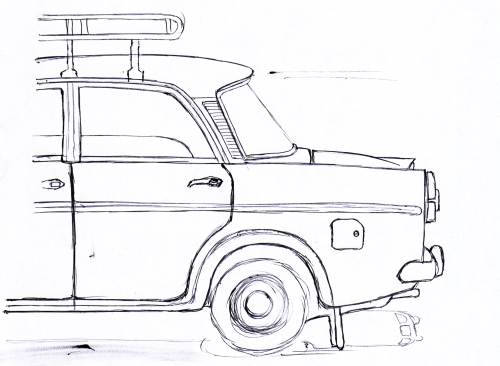
Finally we made the same journey and piled into the old yellow and black Premier Padmini, a Fiat based car manufactured in India until the 90s. The design hadn’t changed since the 60s and 70s, and while the city taxis were slowly switching to to newer cars, the majority were still Padminis. The Premier car company is no more. A shame, because the distinctive retro shape of those yellow and black cabs form such an integral part of this city’s landscape in my mind, and soon they will be gone.
The taxi pulled out from the airport down the not-too-well-lit streets that lead away from it. The sparse monsoon meant that that streets were dry and it felt like any other summer night in the city. The familiar scent of cured tobacco filled the night air as we drove past the nearby cigarette factory. The city was starting to wind down and people strolled towards home and sat around watching the world go by. Eventually we turned on to the Western Express highway, heading towards the older, southern part of town.
The concept of lane discipline is pretty much unheard of on Indian roads, and certainly Mumbai’s roads, so we weaved through the chaotic mix of heavy vehicles, cars, and buzzing auto-rickshaws, all competing for the same road space. The highway did look different from what I remembered, and I realised they had put up new sets of street lights at the edges of the highway, which also illuminated the parallel service roads that served the surrounding communities. It added a new sense of order and clarity to the place, a big improvement over the previous patchy darkness. I could see people out for a late night walk below the cones of yellow light from the street lamps. Perhaps this was not a new phenomenon but it is surprising how much visible signs such as these change the perception of a place. It was a welcome change.
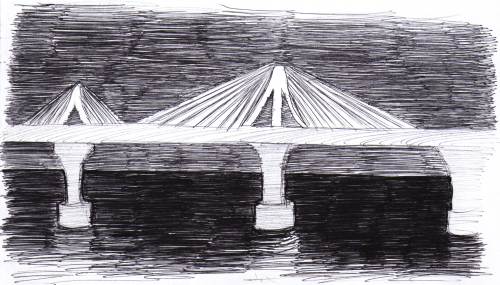
We turned into the Mahim causeway, and off the coast to our right the Bandra-Worli sea link stood bright and shimmering out at sea, like some mystic spider’s web adorning the horizon. The Bandra-Worli Sea Link is a recently completed suspension bridge designed to reduce traffic congestion through some of the older parts of the city. It soon disappeared behind the older structures, as the road narrowed near the popular Mahim church.
Our progress was slowed momentarily by traffic as we drove through Mahim. The locality of Mahim has a healthy Muslim population, along with a popular shrine amongst followers of the faith. Tonight seemed to be one of celebration, police men were controlling traffic and throngs of revellers in crisp kurtas and finely embroidered caps streamed across the road and zig-zagged by on motor bikes and in cars. It was a celebratory mood, possibly looking forward to the coming of the holy month of Ramadan in a fortnight.
We were soon free of the minor snarl and we entered the part of the city most familiar to me. While we were still some way off from home, these streets always feel like home because I have walked them all at some point in my childhood. Familiar structures and buildings streaked by in the light late-night traffic, mere shadows awaiting the light of day to manifest completely.
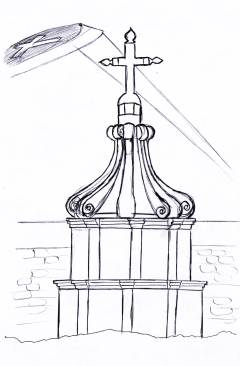 Eventually we found ourselves at the wide junction in front of Portuguese Church, built and re-build several times since the 1600s. The stout stone wall of the church, probably built in 1800s, is still intact while the building inside was changed and modernised in the 1970s — a fitting symbol of Mumbai, a dynamic flux between old and new. We directed the taxi driver to a small side-lane and asked him to stop near the now dark temple on the side of the road. It’s a small shrine with a single room and a seating area, dedicated to Shiva, the one in charge of the destruction of the universe in the Hindu trinity. Popular myth has it that that temple was not a planned one but came about by chance. Even my Grandmother remembers a time when this little street wasn’t a street at all but a small mud path that speared through groves of trees. As the city developed and work started on building paved roads in these urban backwaters, it is said workers stumbled upon a Shiva-linga as they dug up the earth here and so the make-shift temple was born.
Eventually we found ourselves at the wide junction in front of Portuguese Church, built and re-build several times since the 1600s. The stout stone wall of the church, probably built in 1800s, is still intact while the building inside was changed and modernised in the 1970s — a fitting symbol of Mumbai, a dynamic flux between old and new. We directed the taxi driver to a small side-lane and asked him to stop near the now dark temple on the side of the road. It’s a small shrine with a single room and a seating area, dedicated to Shiva, the one in charge of the destruction of the universe in the Hindu trinity. Popular myth has it that that temple was not a planned one but came about by chance. Even my Grandmother remembers a time when this little street wasn’t a street at all but a small mud path that speared through groves of trees. As the city developed and work started on building paved roads in these urban backwaters, it is said workers stumbled upon a Shiva-linga as they dug up the earth here and so the make-shift temple was born.
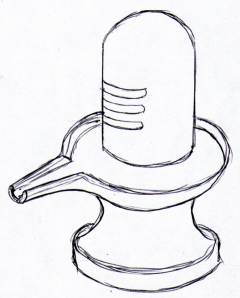 For those who don’t know, a Shiva-linga is a strange and fairly unique symbol in world culture. What is unique about it is not only what it represents, but the fact that it is worshipped by a few hundred million people on a daily basis. A Shiva-linga is is a stout cylinder with a hemispherical/domed top, set on a circular base which often has a piece that radiates outward from the circle. That is the basic form, with a million variations and embellishments to be found. The top half, the cylinder, is the linga, which in classical Sanskrit means the male phallus, and the base on which it sits is the yoni, the female sexual organ. So the Shiva-linga represents sexual union, the act of reproduction, and ultimately creation itself. The fact that such a visceral symbol of creation is used to represent the God of Destruction gives you an indication of how much Hindu philosophy is steeped in a belief of balance. All things in the universe are balanced and all things tend towards a balance — the central basis for the belief in karma, the consequences of past actions, and re-incarnation.
For those who don’t know, a Shiva-linga is a strange and fairly unique symbol in world culture. What is unique about it is not only what it represents, but the fact that it is worshipped by a few hundred million people on a daily basis. A Shiva-linga is is a stout cylinder with a hemispherical/domed top, set on a circular base which often has a piece that radiates outward from the circle. That is the basic form, with a million variations and embellishments to be found. The top half, the cylinder, is the linga, which in classical Sanskrit means the male phallus, and the base on which it sits is the yoni, the female sexual organ. So the Shiva-linga represents sexual union, the act of reproduction, and ultimately creation itself. The fact that such a visceral symbol of creation is used to represent the God of Destruction gives you an indication of how much Hindu philosophy is steeped in a belief of balance. All things in the universe are balanced and all things tend towards a balance — the central basis for the belief in karma, the consequences of past actions, and re-incarnation.
The Shiva-linga at the small road-side temple sits at the bottom of a small circular room. The linga is said to not have been moved from where it was originally discovered, which is why it is a few feet below street-level and you need go down a few stone stairs to enter the sanctum. On festivals and special days much hoopla surrounds the little shrine, devotional music is played, flower sellers block the street with their colour-laden wicker baskets, cows stand around waiting to be fed by passing devotees and the queue to enter the little stone room snakes out of sight down our lane. But even on a daily basis, the bells of the temple ringing to a chorus of crows cawing is a deeply etched childhood memory of waking up at home every morning.
Removing our luggage from the tiny boot of the Premier Padmini, we stepped through an iron gate. The entire old structure was dark, save for the single yellow bulb burning in a first-floor balcony. There I could see the shrunken silhouette of my Grandmother leaning against the parapet and peering into the dark. We were expected and she is never the type to wait nonchalantly indoors. Picking my way through the darkness I climbed the familiar wooden stairs that had been worn down to an aged smoothness with time. Even in the darkness I knew when to stop climbing and turn to take the next flight even without counting. The heavy front door opened with a familiar muted metallic jingle of the safety-chain, light streamed into the dark staircase landing, and I was home.
Samir
Liked this article? Please share it: ![]()
![]()
![]()
![]()
![]()
![]()
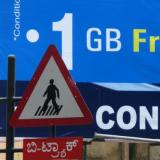
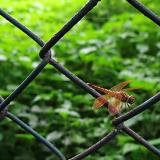
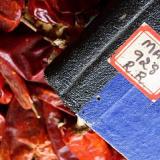
Samir, it was worth waiting for your posts, the way you describe everything is so unique, I love it, it´s like reading a book, a good one and me trying to imagine and keep all the details, I will wait for more impatiently.
Magali
Thanks, Magali. Glad you liked this, and yes, there is definitely more coming soon.
🙂
You are quite the artist!! I love your sketches and it was a fun read.
Wouldn’t quite describe myself as an artist. I think I just know enough of the mechanics of drawing to get by. Plenty more to go to achive artistry! 🙂
Glad you enjoyed the read.
Samir
I recently came across your blog and have been reading along. I thought I would leave my first comment. I don’t know what to say except that I have enjoyed reading. Nice blog. I will keep visiting this blog very often.
Betty
For my referencing a great book and the best illustrator for an architectural drawing/neighborhood, my memories of reading a great book to my 5 children came to mind, The Higgely Piggilty House. Maybe?? Hope you are this connection to find visuals for my art students today.
Now don’t go and take this the wrong way, but I think I might just love you, or your work atleast.. maybe even those ears!! hahah
Damn those are all so so brilliant, it makes me want to give you your pressie even more now, because I can’t wait to see what you an conjour up on that!!
Hello Candy,
Does that very round-about disclaimer mean that you only love my work and not me? I’m hurt, really. And here I thought there was at least one man in the world I could always get along with. 😛
I’m guessing you didn’t see this when I first put it up. The good thing is, it sort of stays relevant because the sights and sounds are familiar and while things change they also don’t.
Thanks for looking/reading. You should come more often. And let’s leave my ears out of it.
Samir
Hi Sameer, your post as usual was really a pleasure to read! You narrate things in crisp and clear way along with a familiar touch which I think everyone can relate to our lives as well.. I am eager to read more of your posts.. If you don’t mind answering my question, then may I ask from where have you done your schooling and then your degrees? 🙂
Hi Payal,
Thank you, glad you enjoyed reading this. As far as reading more, read away! There is plenty more on this blog to read, even if I don’t write as regularly as I would like sometimes.
I did most of my schooling in Muscat (Oman) in a nice gigantic CBSE school with 8000 other students (at the time). And did a degree in Graphic Design in a very pink looking university in Dubai. 🙂
Samir